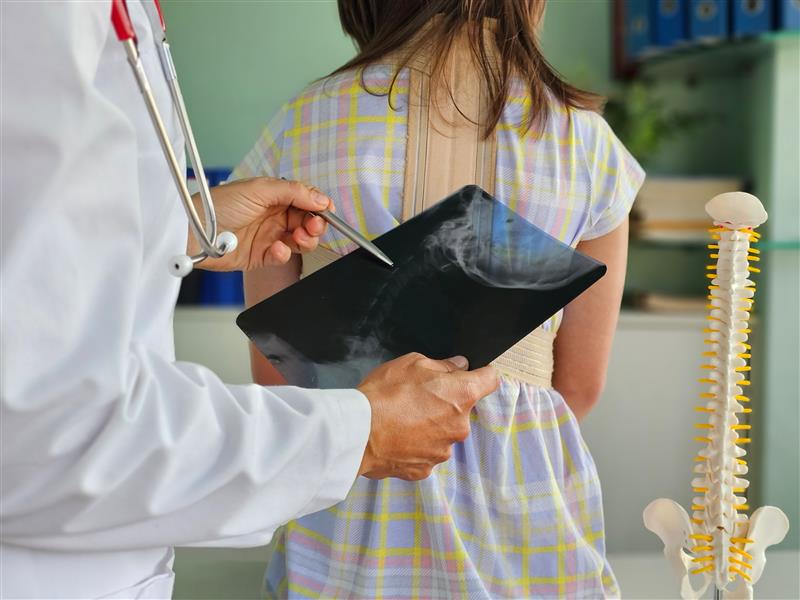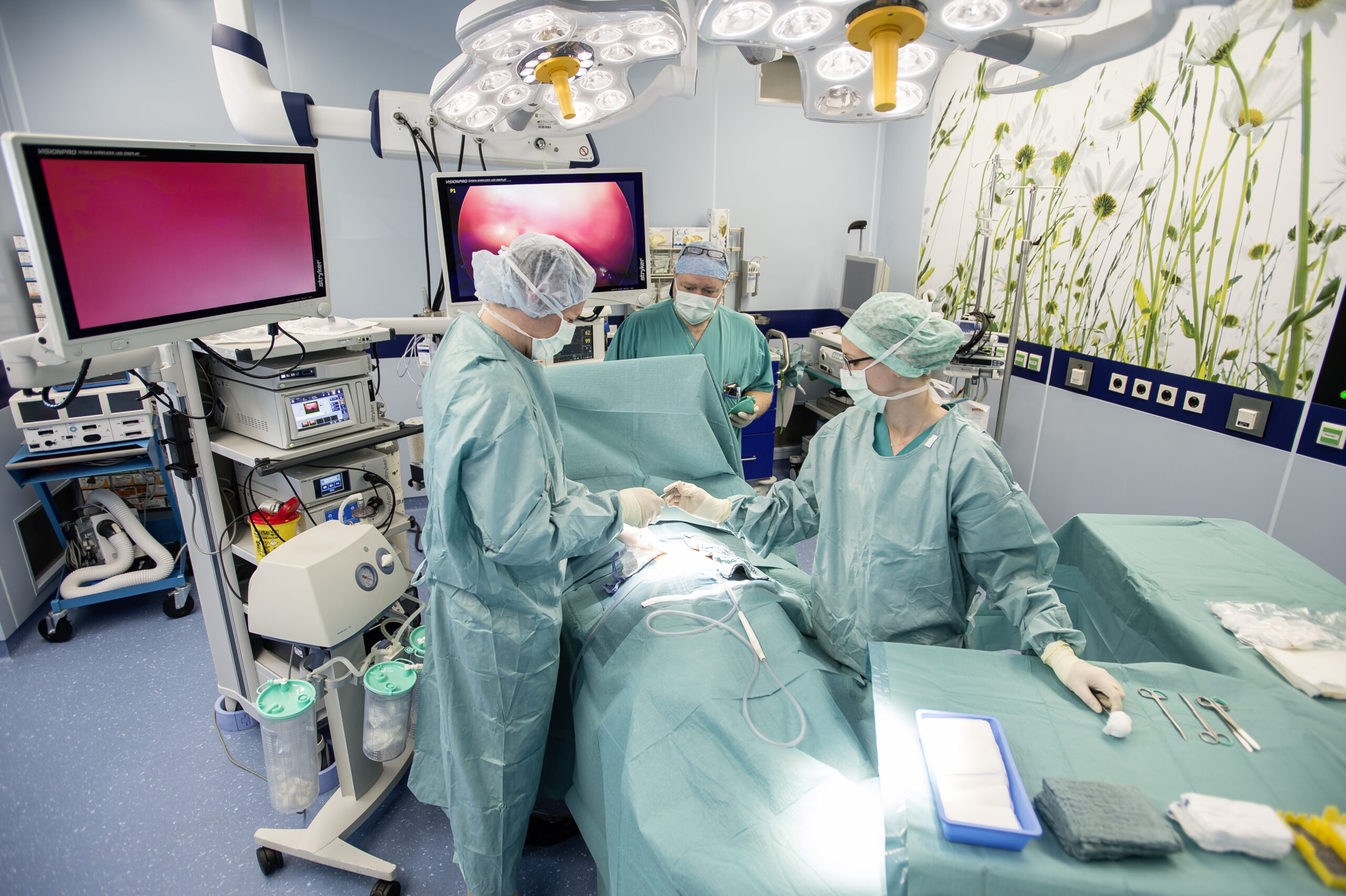
Prof. Rokitansky on the special challenges in malformation surgery
Prof. Rokitansky talks about the special challenges in malformation surgery, where certain orthopaedic issues and innovative treatment methods are also used in children, adolescents and adults.
Prof. Rokitansky, you are known for your specialized work in paediatric orthopaedics. What makes the treatment of children so special?
Prof. Alexander Rokitansky: The treatment of children is unique in many respects. In addition to the often delicate tissue conditions, this includes the need to take into account the continuous growth processes in therapy. Children are not small adults – they have their own needs, fears and expectations. The entire treatment situation must be child-friendly. Doctors who work with children need not only medical competence, but also a high level of emotional competence, complemented by non-verbal communication. With a child, you always have to communicate on an emotional level, often in a playful or humorous way. Sometimes I hand the ultrasound probe to the little patients and playfully explain to them what we are doing and that you can see it on the screen. Some toddlers even “taste” the ultrasound probe because, due to their development, they discover the world with their mouths.
One topic that comes up again and again in pediatric and adolescent surgery is the transition from pediatric to adult medicine. What are the challenges here?
Prof. Rokitansky: That can indeed be problematic. It is referred to as the so-called “transition from child or adolescent to adult” when – in terms of surgery – children have to continue to be treated in adult surgery after malformation operations, for example. I don’t have this problem, as I specialize in both adult and paediatric and adolescent surgery. I have looked after a number of patients since they were children and they often want to stay with me as adults. This is because they are unfortunately confronted with a lack of experience on the part of doctors in adult departments. An example: A patient who was operated on as a child for a more complex abdominal malformation and whose malformed gastrointestinal tract has a grossly altered position. If this patient comes to a general clinic as an adult with abdominal pain, the medical profession is understandably at its limits due to a lack of experience, knowledge and routine, because such cases are rare. This possible lack of expertise can be compensated for by an interdisciplinary alliance, but the logistical challenge of bringing medical experts and patients together in an uncomplicated manner when the need arises remains. We can offer this broad range of top-class expertise from renowned specialist doctors at the Vienna Private Clinic.
After all, we see our hospital as a direct melting pot of the AKH university clinics, where not only the local proximity but also the highly frequented surgeries in the Health Service Center play a beneficial role.
You were appointed Surgical Director of the Vienna Private Clinic. Another focus of your work is thoracic wall deformities, in particular funnel chest syndrome. What treatment methods do you offer here?
Prof. Rokitansky: After around 12 years at the Second Department of Surgery at the Medical University of Vienna and 27 years as Head of Pediatric and Adolescent Surgery at Donaustadt Hospital—where I built up the department, including its own intensive care unit, into the largest pediatric and adolescent surgical center in Austria—I was appointed Chief of Surgery at the Wiener Privatklinik. There, in addition to the traditionally strong and highly regarded adult orthopedics team with Dr. Ganger, Dr. Farr, and Dr. Radler, we successfully established a new pediatric orthopedic focus. This specialty area continues to grow, with more and more pediatric orthopedic surgeons joining the team. Orthopedics also covers necessary treatment methods for chest wall deformities. It is a misconception to dismiss pectus excavatum as merely a cosmetic issue and to assume that the deformity will correct itself naturally during growth. Currently, two interlinked treatment methods are being successfully applied. On the one hand, there is the conservative approach using vacuum bell therapy; on the other, the surgical treatment. In the latter method—comparable in principle to dental braces—the chest is corrected into its proper shape using individually shaped, one-piece metal implants that are surgically inserted. If vacuum bell therapy is started early in the development of pectus excavatum—for example, during school age—surgery can potentially be avoided altogether. These specialized vacuum bells work with both negative and positive pressure and can lead to reshaping and a flattening flexibility in the rib cartilage of the chest wall.
Can you tell us more about this suction cup therapy?
Prof. Rokitansky: Of course! It is important that the rib cage is still flexible and that the treatment is carried out almost daily. The therapy is based on the application of negative or positive pressure, which acts on the affected cartilage areas and slowly reshapes them. The newly developed Y-shaped suction cup is recommended for funnel chest deformities with protruding lower rib arches, which exerts negative pressure in the funnel area and positive pressure in the protruding rib areas for correction. Patients should wear the suction cup for around two hours a day. Over time, the rib cartilage adapts to a more normal shape and the deformity is improved or, in the best case, even corrected. This therapy requires the patient’s cooperation and a certain degree of understanding of the disease, which is usually only to be expected from school age. There are of course exceptions. The flattening of the funnel, i.e. the lifting of the anterior thoracic wall, improves cardiac output and lung performance – keyword: respiratory mechanics. This is why adults with a flexible chest who do a lot of sport also appreciate this treatment. Thoracic flexibilization also has the advantage of making it easier to tolerate an operation that may be necessary at a later date.
What happens if conservative therapy is not enough?
Prof. Rokitansky: In such cases—typically involving older adolescents or adults with a rigid thorax—we offer a minimally invasive, endoscopically assisted surgical correction. In this procedure, we use special, one-piece implants, which are inserted in a way that keeps them as parallel as possible and avoids any risk of metal abrasion. These implants lift the sternum to correct the sunken chest appearance (pectus excavatum). In some cases, to achieve greater flexibility of the anterior chest wall, partial scoring of the sternum and the cartilage sheath of the ribs is necessary. In certain situations, partial resection of rib cartilage may also be performed. The implants pass through specific intercostal spaces and are embedded within the muscle layer of the chest—similar to a “glasses case” fitting. I have rejected the use of fixation wires for many years, as they can break. With the technique I have developed and applied over decades, the implants are securely and effectively anchored, and postoperative pain can be managed with mild painkillers after just a few days. Hospital stays following this surgical chest wall correction usually last around 4 to 5 days, optimized for patient recovery. From the second postoperative day, patients are able to stand and move around freely with professional guidance. After one month, light physical activity is permitted. After two months, patients are fully cleared for nearly all types of sports. I have patients who practice extreme sports and even participate successfully in Ironman competitions with fully integrated implants. To date, every implant has withstood even unfortunate accidents without failure.
That sounds like a highly specialized treatment. What significance does the WPK have with regard to this method?
Prof. Rokitansky: Patients naturally benefit enormously from our high level of expertise, both in conservative and surgical solutions at the highest level. Our aim is and remains to offer the highest surgical-technological framework conditions in a personal and decelerated medical approach, which we have succeeded in doing to date. The main doctor chosen by the patient is always involved in the treatment. The Vienna Private Clinic was the first hospital in Austria to introduce robotic surgery using the latest generation of sophisticated Da Vinci telemanipulators. The tissue-preserving advantages of radical resection for the patient are obvious, especially in narrow and difficult-to-view operating areas, e.g. in prostate surgery. In accordance with international standards, children are accommodated with an accompanying person (e.g. parent). The surgical treatments are carried out by a team of special pediatric anesthetists with the highest level of expertise. In the private hospital, only qualified specialists are allowed to “lend a hand”, so to speak. There are no specialist-assisted training operations in the setting of our private hospital.
You have already mentioned your many years of experience in the interview. How important is it for you to continue working actively in the clinic?
Prof. Rokitansky: I am demonstrably one of the highly qualified doctors whose experience, in-depth knowledge, commitment and performance profile should continue to be used, unless health problems are an obstacle. Being a doctor is fundamentally not only a chosen profession, but also a vocation. The common practice here and there of retiring at a fixed numerical age may be very important for some people in employment, but it wasn’t for me. My surgical expertise in the treatment of malformations, both in children and adolescents as well as in adults, helped me to be offered the position of Head of Surgery at the Vienna Private Clinic, and I also enjoy providing individual care to my patients in this role.
Doctors related to the topic

Prim. Univ.-Prof. Dr.h.c. Dr. Alexander Rokitansky
Paediatric & adolescent surgery, Surgery
View detail


